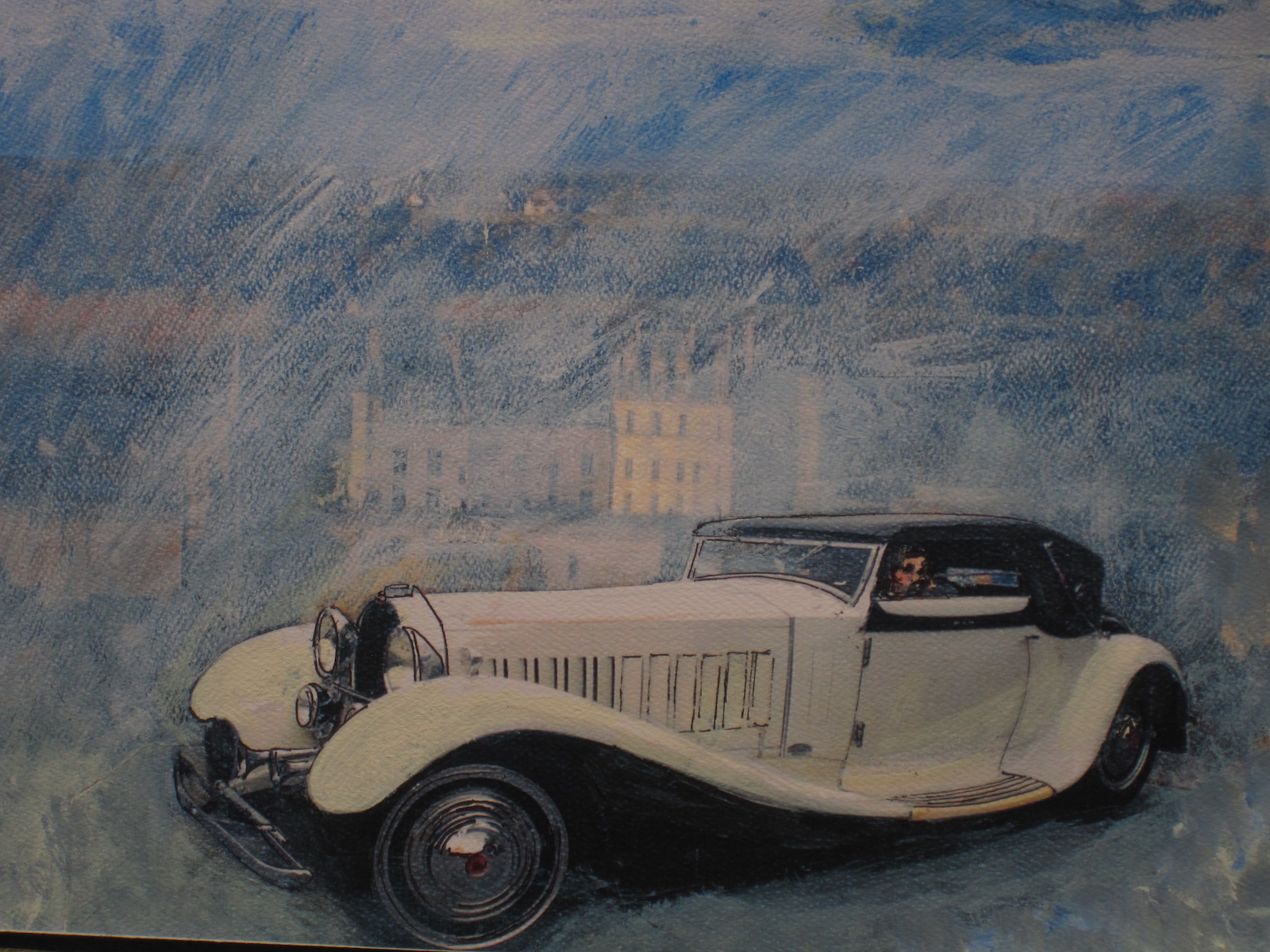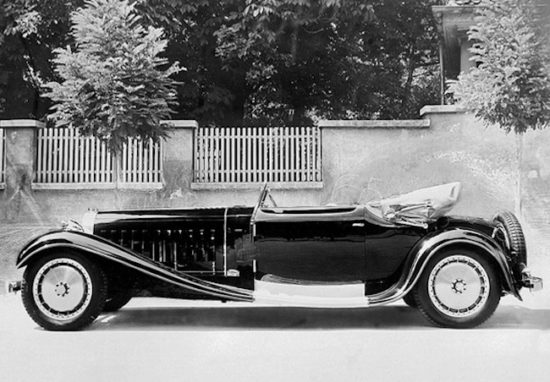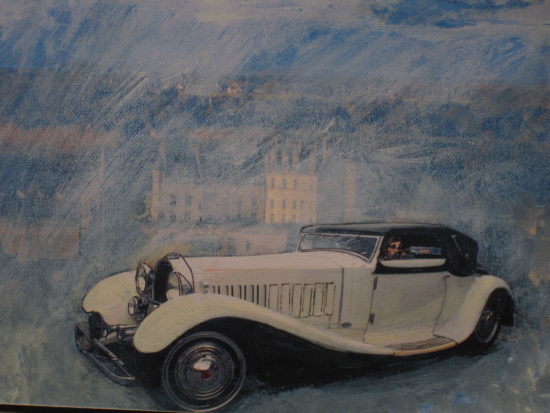So he did – but his timing was off…
by Wallace Wyss –
In retrospect, I gotta hand it to ol’ Ettore Bugatti, the car builder, because not only did he build cars that ended up winning 1000 races, but for awhile he built the world’s most expensive car.
The car was called the Bugatti Type 41 Royale and what he was doing was attempting to piggyback on a contract from the French military. They wanted a 16-cylinder aircraft engine. He developed it but the contract never came. Nevertheless, rather than waste the tooling his idea was to cut it in half and make one helluva big luxury car powered by a straight eight.
The Type 41 Royale engine boasted 12.7 liters, or over 700 cubic inches, roughly twice the size of most of biggest engines made by Detroit four decades later.
Everything was big about the car. Such as the 15-foot wheelbase. And then the height, just to the top of the hood was a good five feet.
His timing, though, sucked. The car began rolling off the line in Molsheim just in time for the start of the Great Depression.
He named it the Royale figuring this is the logical car for royalty, the biggest and the best. But only six Royale’s were produced and two were never sold, staying instead with the Bugatti estate.
Top show his sense of humor the radiator ornament was a dancing elephant. Perhaps he had an inkling it would be a white elephant.
The coachwork took various styles. One of them was the Kellner Coach (or ‘Coupe’), a car which they hid from the Nazi occupiers of their factory during the war by bricking it in behind a false wall.
That stayed with the family until 1950 when American yachtsman and multimillionaire Briggs Swift Cunningham showed up, himself a Le Mans 24-Hours racing driver. He told me he bought both Royales dirt cheap, because one of the things the family wanted to buy was a refrigerator!
Cunningham owned one of them for over 30 years but very suddenly liquidated his collection to a Florida millionaire Miles Collier, who resold some of the cars he bought, including the Kellner Coach in 1987.
The car sold for a then record £5.5 million and It may have come up since at auction at Bonhams.
Bugatti Royale at the French National Railway
The leftover Royale engines found a home at the SNCF (French National Railway) where they powered locomotives. They used them in pairs and even in triplicate to pull passenger railcars. But the engines might not have been right for the application because they were dumped after the war.
This particular car, depicted in a rendering by your author, has a checkered past in that it escaped World War II by the thinnest of margins. The original buyer was
Dr. Joseph Fuchs, a German who was successful enough to enjoy racing cars. He ordered the chassis in ’31 and, as was the practice with luxury cars back then, picked a coachbuilder, in this case Weinberger of Munich to body it.
When the Nazis came to power, Dr Fuchs knew he wouldn’t be welcome because of political differences and first decamped to Switzerland with the car in ’33, then chose another bad place to live, Shanghai, China, which was only a few years later overrun by the Japanese.
When he saw the Japanese Imperial Army making plans to invade China, in ’37 he drove down to the dock and booked passage for himself and his car to Canada and then settled in The Big Apple (NY City). It was in the Winter of ’37 that he cracked the block. Nobody he contacted could fix it so he sold it for junk to a scrapyard in Queens. You have to remember the war was coming on and there was a lot of scrap potential in this car so it’s second close escape was somehow escaping being melted down for America’s war drive. Especially because a lot of it was aluminum, a material needed desperately for planes. But one well-heeled buyer, tipped off by a fellow enthusiast New Yorker, moved in and grabbed it, broken engine and all.
That buyer, in ’46, was a Detroit based dude named “Engine Charley” Wilson, who as chief engineer for Buick, was in charge of making millions of engines each year. A guy with a job like that only has to snap his fingers to get an engine repaired. He did that and no doubt to the horror of later concours judges changed the original single carburetor for four Stromberg units mounted on a custom intake manifold. And he didn’t much cotton to the mechanical brakes so had the braking system switched to hydraulics.
It was he who chose to change the color from black to oyster white, with a contrasting character stripe featuring his monogram on the door. Tall like GM’s design chief Harley Earl, he also redid the seating to suit his height. Eventually he and his wife donated it to a museum.
I have a special attachment to the car—it was one of the first really ”classic” cars I saw the first time I visited the Henry Ford Museum easily a half century ago. Hey, I know, it’s not a Ford and the Museum is the Henry Ford Museum but I am thankful they didn’t sell it off like the Ferrari Testa Rossa they sold, that buyer using the argument that the Ferrari’s display didn’t coincide with the Museum’s mission—to showcase American cars.
So now all of us who visit the museum, can see it rather than only once a year at some prestigious concours when some swell rolls it out into the sunlight for a brief sojourn in the sun.
Let us know what you think in the Comments.
THE AUTHOR/ARTIST: This painting is available as an embellished giclee on canvas, 20” x 30.” Write mendoart7@gmail.com








Buick Chief engineer who rescued car was Charles Chayne.
Long description by chayne of what he did to the car along with a couple photos in h.g. Conways Bugatti book